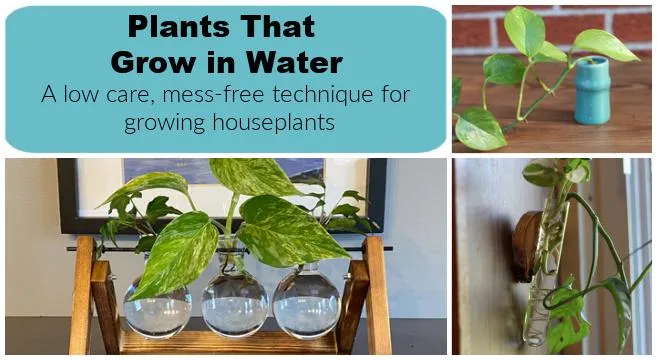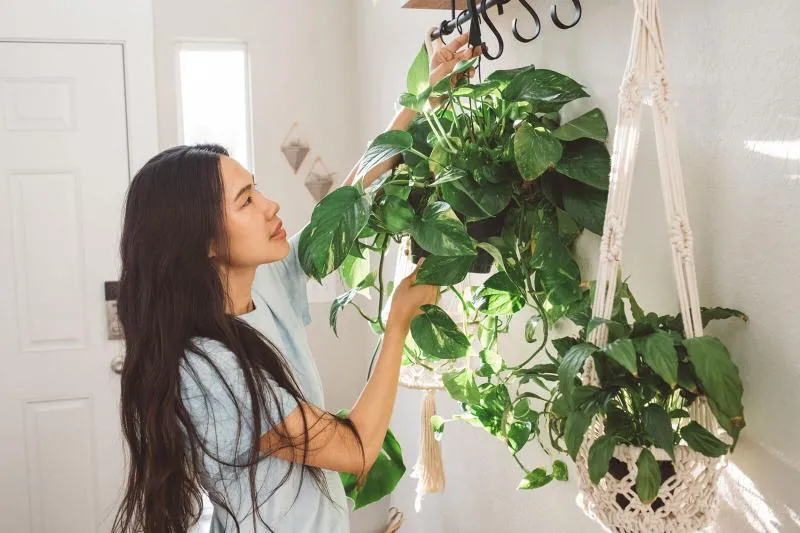A Comprehensive Guide to Growing Vine Plants Indoors
If you love the lush look of vines but don’t have outdoor space, growing vine plants indoors is an excellent option. Vines can add greenery, texture and visual appeal to any indoor setting. In this article, I’ll cover all the basics of caring for vine plants inside your home.
Best Vine Plant Varieties for Indoors
There are many beautiful vine plant varieties that thrive when grown indoors. Here are some top recommendations:
- Pothos – One of the hardiest and lowest maintenance vine plants. Pothos grows quickly and tolerates low light conditions very well.
- English Ivy – A classic choice that thrives in indirect sunlight. English Ivy trails gracefully and is moderately low maintenance.
- Swedish Ivy – Similar to English Ivy but with beautiful heart-shaped green leaves. It grows quickly and loves humidity.
- Philodendron – Offers a variety of leaf shapes and textures. Philodendron thrive in medium to low light and are very low maintenance.
- Peperomia – Adds lush foliage with minimal care needs. These vines grow more compactly than other varieties.
Any of these vines would make a lovely addition to your indoor spaces. Choose varieties based on your light levels and care preferences.
Light Requirements for Indoor Vining Plants
Proper light is crucial for vine plant growth and health indoors. Most varieties thrive in medium to low indirect sunlight. Direct sunlight through a south-facing window may be too strong and cause leaf burn.
East or west windows provide the perfect dappled light. North windows supply the lowest levels, suitable for very shade tolerant vines like pothos or ivy. If light is scarce, supplement with grow lights for a few hours daily.
Position plants near windows or under skylights for optimal natural illumination. Rotate them weekly so all sides receive equal light exposure. Monitoring leaf color is a good indicator of light needs – green leaves mean they’re happy!
Soil and Potting Considerations
Vine plants prefer well-draining potting mixes to prevent root rot in moisture-retentive indoor conditions. A good potting soil containing compost or coir retains water without becoming soggy.

Plastic or terra cotta pots work well. Choose container sizes based on the vine’s mature size. Repot annually in spring into a pot just 1-2 inches larger to encourage continued growth. Trailing vines can also be trained onto bookshelves, poles or hanging baskets for visual appeal.
Apply a thin layer of gravel or charcoal at the drain hole to facilitate drainage. Ensure the container has holes to release excess moisture. Keeping soil on the dry side between waterings is best.
Watering and Humidity Tips
Water requirements depend on pot size, light exposure and seasonal conditions. As a general rule, indoor vines prefer humid conditions and moderate watering.
Check soil moisture daily by pressing your finger 1 inch deep. Water thoroughly when the top soil becomes dry. Then allow the soil to partially dry before watering again. Mist leaves regularly to boost humidity levels loved by vines like Swedish Ivy and Philodendrons.
For vines in very bright light or summer heat, water every few days. In low light or winter, every 5-7 days may suffice. Infrequent deep drinks are better than frequent light sprinkles which can lead to root rot issues over time.
Grouping potted plants together on trays of pebbles kept damp also boosts air humidity naturally. A humidifier can further upkeep moisture levels for maximum vine prosperity indoors.
Fertilizing and Pruning Vine Plants
Fertilize monthly in spring and summer with a diluted all-purpose houseplant formula. Vines only need small amounts of nutrients when actively growing to flourish indoors. Too much fertilizer can actually hinder growth.

In fall and winter, switch to a weaker “bloom booster” formula or refrain from fertilizing when growth slows. Prune vines periodically to maintain a bushy shape and encourage branching. Snip off leggy or less desirable new growth stems.
Some vines like English Ivy produce roots wherever nodes touch the soil. Gently separate rootbound sections into new pots periodically for fuller potted plants. Deadheading spent blooms promotes reblooming in varieties like Mandevilla or Morning Glory vines.
With some tender loving care, your indoor vines will reward you with lush greenery all year round.Patience and maintenance are key to keeping them looking their best indoors for seasons to come.
Common Indoor Vine Pests and Problems
While low-fuss indoors, vines can occasionally face pest or disease issues that require attention. Watch for signs of mites, scale or mealybugs which suck plant fluids and spread slowly. A cotton swab dipped in rubbing alcohol can tackle small infestations effectively.
For moderate vine pests, neem oil or insecticidal soaps work well as natural treatments. Isolate and quarantine heavily infested plants to prevent spread. Excessive moisture or irregular watering can also cause root rot. Improve drainage and reduce watering amounts if leaves yellow and drop.
From my experience, prevention is key to keeping vines pest-free. Maintain a regular cleaning and inspection routine, especially under leaves. Good airflow, drainage and limiting crowded conditions make for happier, healthier indoor plants. A little TLC goes a long way!
Final Thoughts on Growing Vines Indoors
With their gorgeous foliage and low maintenance needs, vines make stellar indoor plants. They thrive beautifully in our living spaces with minimal sunlight. Beyond beautifying decor, vines can help improve indoor air quality and provide mood-lifting green therapy.

While vines require some unique care compared to other houseplants, their lush rewards make the extra effort worth it. With strategic placement, optimal light conditions and regular care routines, your indoor vines will bring natural beauty all year round. Now go shopping for your new leafy companions!
I hope this comprehensive guide has equipped you with everything needed for successful indoor vine growing. Please let me know if you have any other questions! Happy planting.
Factors to Consider When Choosing a Vine Plant for Indoor Growing
| Plant Type | Growth Rate | Light Needs | Water Needs | Ideal Temperature |
|---|---|---|---|---|
| English Ivy | Moderate | Low to Medium | Allow soil to dry slightly between waterings | 55-75°F |
| Spider Plant | Moderate | Medium to Bright | Water when top 1 inch of soil is dry | 60-80°F |
| Pothos | Moderate | Low to Bright | Water when top 1-2 inches of soil are dry | 60-85°F |
| Philodendron | Moderate | Medium to Bright | Water when top 1-2 inches of soil are dry | 60-80°F |
| Peperomia | Moderate | Medium | Water when top 1/2 inch of soil is dry | 65-75°F |
FAQ
-
Can I grow vine plants indoors?
Basically yeah, you can grow some vine plants indoors. Stuff like pothos and philodendron do pretty good hanging from pots. Just make sure they get lots of sunlight.
-
What types of vines work well inside?
Some good vine plants for inside are English ivy, Swedish ivy, pothos, philodendron. These kinds of plants don’t need huge amounts of sunlight to survive. Plenty of light from a sunny window is usually enough to keep them happy.
-
How do I take care of indoor vines?
To care for indoor vines, water them when the soil gets dry. But don’t overwater – these plants are pretty tough and can handle drying out some. You can also use fertilizer during the growing season. As for lighting, make sure they get at least 4-6 hours of direct sunlight each day.
-
Do indoor vines need support?
For sure, it’s a good idea to provide some kind of support for vines growing indoors. You can use poles, sticks, strings suspended from above – basically anything the vines can cling to or wrap around. Without support, they’ll end up just lying on the floor! It looks much nicer when they can climb upward.
-
Will indoor vines grow too big?
Most common indoor vines, like pothos or philodendron, won’t get huge inside a home. However, it’s possible they could sort of take over the space after years of growth. If that seems worrying, you can occasionally prune the vines to keep them bushier instead of longer. Or repot up to a larger container if more room is needed.

Hope this helps give you a better idea of whether vines can work for your indoor space. Honestly most folks are stunned by how low-maintenance these plants are. As long as they get decent light and occasional water, they’ll basically grow forever. Kinda makes me LOL thinking of that vine in the old Tarzan movies that took over the whole jungle! Maybe I should try growing one of those indoors for kicks. Could get totally crazy but also rather awesome, dontcha think? Anyway, let me know if any other vine questions come up!
